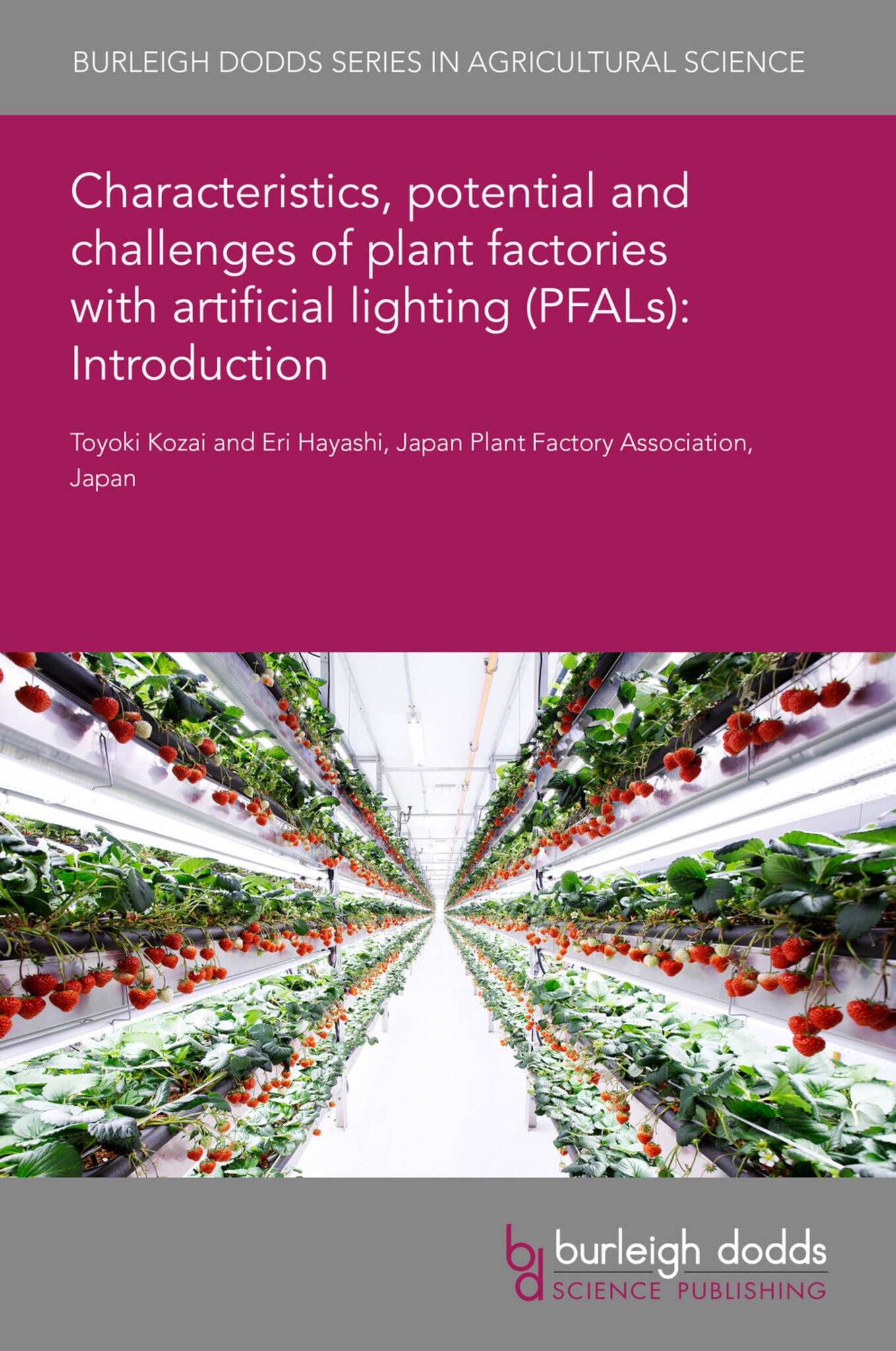We're sorry. An error has occurred
Please cancel or retry.
Characteristics, potential and challenges of plant factories with artificial lighting (PFALs): Introduction

Some error occured while loading the Quick View. Please close the Quick View and try reloading the page.
Couldn't load pickup availability
- Format:
-
14 September 2023

Plant factories with artificial lighting (PFALs) or vertical farms can contribute to solving global and local issues of food safety and security, protecting the environment, increasing demands for higher quality fresh foods, and reducing food mileage and food loss. However, current PFALs consume significant amounts of electricity, chemical fertilizer, metals, cement and other materials, which emit CO2 during their manufacture. CO2 emissions from electricity generation can be most efficiently reduced by using natural energy instead of fossil fuels. PFALs aim to achieve the highest productivity, yield, and quality, with minimum resource use and waste emission, including greenhouse gases. One of the essential characteristics of PFALs is an airtight and thermally-insulated cultivation room with sensors for measuring all resource inputs, product outputs, environmental factors, and plant phenotypes. This chapter overviews the characteristics, potential, and challenges of PFALs and outlines the scope of the book it introduces.

SCIENCE / Life Sciences / Horticulture, Commercial horticulture, TECHNOLOGY & ENGINEERING / Agriculture / Agronomy / Crop Science, TECHNOLOGY & ENGINEERING / Agriculture / Sustainable Agriculture, Sustainable agriculture, Agricultural science, Agronomy and crop production

- 1 Introduction
- 2 Background and aim of plant factories with artificial lighting
- 3 Challenges facing plant factories with artificial lighting
- 4 Scope of this book
- 5 Conclusion
- 6 Acknowledgement
- 7 References



